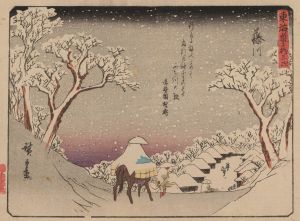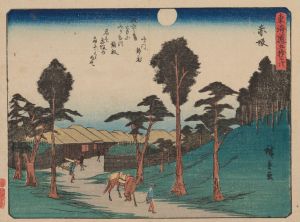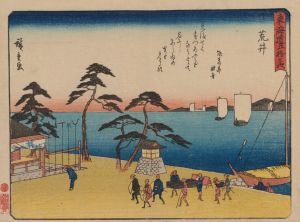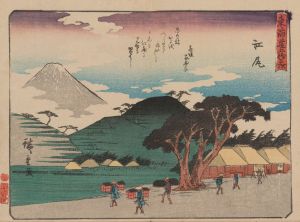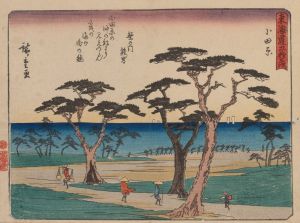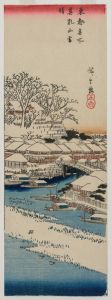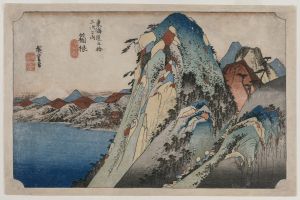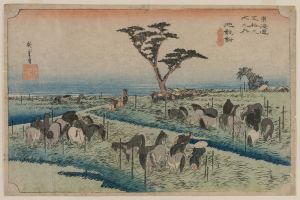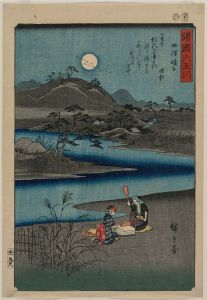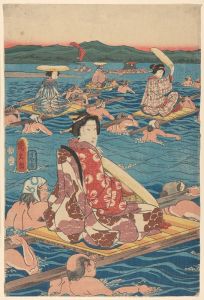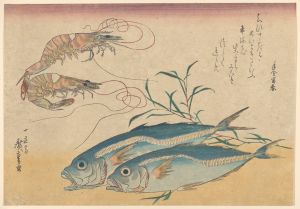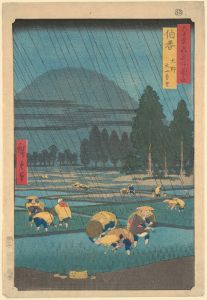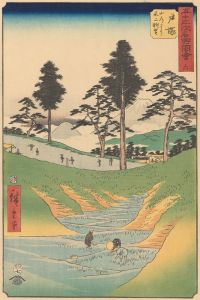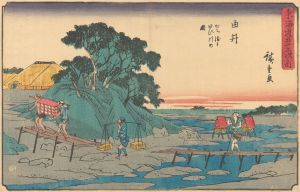
Tokaido gojusantsugi, Pl.15
A hand-painted replica of Andō Hiroshige’s masterpiece Tokaido gojusantsugi, Pl.15, meticulously crafted by professional artists to capture the true essence of the original. Each piece is created with museum-quality canvas and rare mineral pigments, carefully painted by experienced artists with delicate brushstrokes and rich, layered colors to perfectly recreate the texture of the original artwork. Unlike machine-printed reproductions, this hand-painted version brings the painting to life, infused with the artist’s emotions and skill in every stroke. Whether for personal collection or home decoration, it instantly elevates the artistic atmosphere of any space.
Andō Hiroshige's "Tokaido gojusantsugi, Pl.15" is one of the prints from the renowned ukiyo-e series titled The Fifty-three Stations of the Tōkaidō (Tōkaidō Gojūsan-tsugi no Uchi), created during the Edo period in Japan. This series, produced between 1833 and 1834, is considered one of Hiroshige's most celebrated works and a masterpiece of Japanese woodblock printing. It depicts the fifty-three official post stations along the Tōkaidō road, the main travel route connecting Edo (modern-day Tokyo) to Kyoto during the Tokugawa shogunate.
Plate 15 specifically represents the station of Kanbara, the fifteenth stop along the Tōkaidō. This print is widely admired for its serene and evocative depiction of a snowy night. Unlike many other prints in the series, which often feature bustling travelers or lively scenes, the Kanbara print is notable for its quiet and tranquil atmosphere. It portrays a small village blanketed in snow, with a few figures walking along a path. The snow-covered rooftops and trees, combined with the subdued color palette, create a sense of calm and stillness. The composition emphasizes the beauty of nature and the peacefulness of rural life during winter.
Hiroshige's use of perspective and his ability to capture the essence of a scene are evident in this work. The print demonstrates his skill in rendering atmospheric conditions, particularly the softness of falling snow and the muted light of a winter evening. The figures in the scene are dressed in traditional clothing, suggesting the daily life of travelers or locals during the Edo period.
The Tōkaidō series was inspired by Hiroshige's own journey along the Tōkaidō road in 1832, when he joined an official delegation traveling to Kyoto. His observations during this trip provided the basis for the series, which became immensely popular upon its release. The prints not only served as artistic representations of the journey but also as a form of travelogue, offering viewers a glimpse into the landscapes, towns, and customs of the time.
The Kanbara print, like others in the series, was created using the traditional Japanese woodblock printing technique. This involved collaboration between the artist, carvers, and printers, each contributing to the final work. The series was published by Hoeido, a prominent publisher of ukiyo-e prints.
Today, Hiroshige's The Fifty-three Stations of the Tōkaidō series, including Plate 15, is regarded as a significant achievement in Japanese art. The Kanbara print, in particular, is often highlighted for its poetic and contemplative quality, showcasing Hiroshige's mastery in capturing the interplay between humans and their environment.





